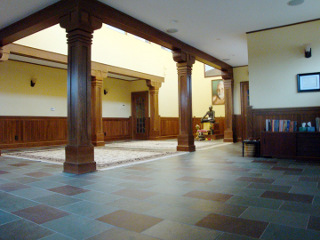If Only It Were Chadwick
The scrutiny of the hand-written inscriptions found in a 1935 edition of the book Self-Realisation, bought on Ebay, takes the author on a journey of inspiration and expectation. (continued from the Jan-Feb issue)
Part V
A Faint Flicker of Hope
But, although there was still a faint flicker of hope, it seemed to grow a little dimmer each time I exposed it to the light of reason. Then I emailed the photographs of the book to David Godman, hoping that such a great authority might be able to throw some more light on the mystery. I was not disappointed. He soon wrote back pointing out something very obvious that the rest of us had missed, something that seemed to extinguish all hope of its being Chadwick once and for all.
One of the illustrations in the book shows Seshadri Swami. Above his picture, the Mystery Devotee has written:
“Another yogi — friend of the Maharishee — living in a cave on Mount Arunachala — I am going to meet him soon.”
I must admit that, in my excitement at finding the book and reading the notes about Bhagavan, I hadn’t paid much attention to this. If anything about it had struck me as odd, it was perhaps the idea of Seshadri living in a cave. I can’t claim to know much about him, but had always imagined him living round the town. In any case, it turned out that this wasn’t the really odd thing. The really odd thing, as David Godman now pointed out, was that Seshadri had died in 1929. So he certainly wasn’t living in a cave, or anywhere else for that matter, when the note was written; and our Mystery Devotee certainly wouldn’t have been off to meet him soon.
The inscription above that picture was, in short, a bit of a howler, and it wasn’t one that David thought Chadwick could have made. He would have been living in the Ashram for almost a year by then, after all, which would certainly have been long enough to get his facts straight about a well-known local figure like Seshadri Swami. David thought it more likely that our Mystery Devotee was a relative newcomer, someone who had recently fallen under Bhagavan’s spell and had not yet properly learnt his way around.
The howler was doubly inexcusable in that Self-Realisation itself clearly gives the facts about Seshadri’s death, and even describes how Bhagavan attended his funeral. In other words, the Mystery Devotee, whoever he was, must have sent the book back to his parents without actually bothering to read it himself. This is understandable enough, perhaps, given that he had the real Bhagavan at hand and thus might have felt little need to waste his time reading some dry old biography. Yet in A Sadhu’s Reminiscences Chadwick clearly says that Self-Realisation was the second book Bhagavan instructed him to read. It was hard to imagine that a devotee like him would have ignored such a command from his Guru, or not have carried it out to the letter. So he must have read Self-Realisation — which meant that he simply couldn’t have been the one who made that howler about Seshadri Swami.
Yet, despite that one howler, the Mystery Devotee was not completely ill-informed. Above the picture of Ganapati Muni, he writes “A disciple — who has just died” — which was absolutely correct. And of B.V.Narasimha Swami, who had by then gone to Sai Baba, he knew enough to say “The author of the book — a former disciple of the Maharishee.” Even in the case of Seshadri, setting aside for a moment the little matter of his death, he had redeemed himself to some extent by writing “a friend of the Maharishee.” This seems to show some understanding of the unique relationship between Bhagavan and Seshadri — which makes it doubly perplexing that he would have thought Seshadri was still living in that cave.
In any case, short of clutching at straws, I had to admit that David was right. It seemed extremely unlikely that Chadwick, after spending so many months in the Ashram and being specifically instructed by Bhagavan to read Self-Realisation, would not have known that Seshadri was dead. Taken in conjunction with the other evidence about his family from A Sadhu’s Reminiscences, this now seemed to make the case against Chadwick pretty crushing. The time had come to bow to the inevitable and admit that good old Chadwick was out of the running. The search for the Mystery Devotee would have to continue elsewhere.
The problem was that, if Chadwick were no longer a contender, I had little appetite left for the search. If it wasn’t Chadwick, finding out for certain that it had been someone else could only be a disappointment. As long as I didn’t know who it was, I could go on pretending to myself that it might have always been he. But if we actually solved the mystery, even that last hope would be extinguished. All in all, I felt a strong inclination to call off the search and accept, with a slightly disingenuous shrug of the shoulders, that the riddle of the Mystery Devotee could never be solved.
Of course, I knew this wouldn’t do. These riddles tend to nag at you till you have done all you can to solve them and, in any case, I felt a certain sense of obligation to the book and its sender. Unfortunately, whilst helping to eliminate Chadwick, David Godman had had no suggestions of his own, though he had thought it significant that our man went to meditate at the shrine of Krishna. All of which left us back pretty much where we had started, sending emails back and forth between India, America and England as we tried to work out who on earth it might have been. And the next name on everyone’s lips was Brunton’s.
This felt like a bit of a come-down. To discover that my book had been inscribed not by Chadwick but by Brunton would be like finding out that a mysterious bundle of old poems had been written not by Shelley or Keats, but by Matthew Arnold — perfectly interesting, of course, and still a find in itself, but with nothing like the same romance, excitement or glamour. Before I go on, let me point out that I have nothing against Brunton and, on the contrary, feel much affection and admiration for him. It is a rare destiny to have discovered Ramana Maharshi by one’s own efforts and then to be single-handedly responsible for bringing him to the notice of the West. If we didn’t have Brunton, after all, we probably wouldn’t have Chadwick himself. Not only that, but I have read some of Brunton’s later writings in which he describes spiritual experiences which seem to me quite extraordinary, though I am not perhaps the best person to judge.
But the great thing about Brunton, and surely the reason that Bhagavan drew him to Arunachala before anyone else, was that he could write. The man was a natural, and I have often wished that more of those who visited Bhagavan had had a fraction of his novelist’s talent for bringing people and places so vividly alive. If anyone really wants to know what it was like to venture into ‘the interior’ in those early days and discover Ramana Maharshi in his ‘jungle hermitage’, they have only to read those marvellously evocative chapters from A Search in Secret India. Nobody else has ever written about Bhagavan quite like that, and it is hardly surprising that so many people were drawn to Him by this account. In fact, reading that gorgeous description of Bhagavan and his surroundings, the only surprise is that so many managed to resist chucking up their jobs and jumping on the first boat to India.
Yet despite all this, there has always been something ever so slightly dubious to me about Paul Brunton. I can’t quite put my finger on it, but just as it comes naturally to talk about ‘good old Chadwick’, I somehow find myself equally tempted to start talking about ‘poor old Brunton’. Perhaps this is because poor old Brunton seems to have rubbed so many people up the wrong way, including Chadwick himself and, most disastrously for him, the all-powerful Chinnaswami. Poor old Brunton was blessed or cursed with a bit of literary talent, but nothing like what you’d call real genius, and there can be few more miserable fates than to be half a writer. Bhagavan Himself has been reported as saying that it would be easy for talented artists to reach the very highest spiritual level, but that they will be distracted by the pursuit of fame. This certainly seems to have been the case with Brunton, who after his success with A Search in Secret India was compelled to write book after book. While good old Chadwick settled at Bhagavan’s feet and never felt the slightest urge to leave, poor old Brunton was driven by some inner demon to go gallivanting around the world, like the proprietor of a Victorian circus in search of fresh curiosities and freaks.
Yogi Ramiah’s Account of His Experiences
Sitting in the Maharshi’s presence brings peace of mind. I used to sit in samadhi for three or four hours together. Then I felt my mind took a form and came out from within. By constant practice and meditation it entered the Heart and was merged into it. I concluded that the Heart is the resting place of mind. The result is peace. When the mind is absorbed in the Heart, the Self is realised. This could be felt even at the stage of concentration (dharana).
I asked the Maharshi about contemplation. He taught me as follows: When a man dies the funeral pyre is prepared and the body is laid flat on the pyre. The pyre is lit. The skin is burnt, then the flesh and then the bones until the whole body falls to ashes. What remains thereafter? The mind. The question arises, ‘How many are there in this body - one or two?’ If two, why do people say ‘I’ and not ‘we’? There is therefore only one. Whence is it born? What is its nature (swaroopa)? Enquiring thus the mind also disappears. Then what remains over is seen to be ‘I’. The next question is ‘Who am I?’ The Self alone. This is contemplation. It is how I did it. By this process, attachment to the body (dehavasana) is destroyed. The ego vanishes. Self alone shines. One method of getting mind-dissolution (manolaya) is association with great ones - the yoga adepts (Yoga arudha). They are perfect adepts in samadhi. Self- Realisation has been easy, natural and perpetual to them. Those moving with them closely and in sympathetic contact gradually absorb the samadhi habit from them.
132nd Jayanti Celebration of
Bhagavan Sri Ramana Maharshi
On Saturday, January 14th, 2012 the 132nd Jayanti celebration of Bhagavan Sri Ramana was observed at the New York Arunachala Ashrama. Also on that day the Ashrama’s new shrine and meditation hall was inaugurated. A large gathering of earnest devotees attended. There were recitations of Sri Ramana Maharshi’s works and singing by the whole gathering, many devotional songs were sung by individuals and talks were given. A sumptuous meal was served after the progam and devotees lingered well into the evening, savoring the joy of like-minded aspirants and the Ashrama environment.
Swami Tathagatananda Maharaj, a senior Ramakrishna monk and President of the Vedanta Society of New York, graciously attended the program. He spoke on the importance of a dedicated, God-centered life and the regular practice of prayer and meditation for all devotees.
Virat Bhatt, enthused by the new book Sri Ramana Gita of B.V.Narasimha Swami, shared with devotees the insight he had gleaned from the text. Dennis Hartel, the President of Arunachala Ashrama, gave the following talk.
FRIENDS and devotees, it has been 132 years since the boy Venkataraman was born in a small village in South India, and for most of those 132 years his name, his life and his teachings have been a magnet to sincere seekers of truth from across the globe. Why?
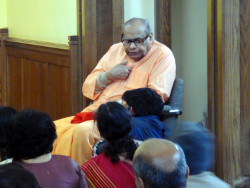
First of all, he experienced the perfect state of Self-awareness from his youth and the divine presence radiated through his form so powerfully that it attracted thousands of seekers from the world over.
Secondly, even today, 132 years after his birth, we find true seekers, utterly sincere devotees, who have experienced his grace and the spiritual beatitude that radiates from him into the hearts of those whom He has chosen. Many of us here today have seen with our own eyes, or have experienced ourselves, a life transformed by the Grace of Bhagavan.
Thirdly, even today, Sri Bhagavan’s teaching, the direct path of practice of Self-enquiry of “Who am I?” has taken root in the hearts of earnest sadhakas from every country. More aspirants now than ever are attempting to seek their source as taught by Bhagavan Sri Ramana and to surrender to the divine presence that resides in the heart of each one of us. Let me read to you only a part of a poem of one whose search ended in the presence of the Master:
The instant my head touched Thy holy feet
The fever of my soul left me forever.
I felt lightness and freedom and peace;
Then Thine eyes, redolent with Thy Infinite Grace,
Tenderly looked on me and I was thrilled.
I stood before Thee, a figure of pure bliss,
Fully bathed in Thy divine halo.
Now, I am Thy child, free and happy.
My face is suffused with smiles drawn from Thee.
My life is entirely enlightened
With Thy Love, Knowledge and Power.
Thou art my Mother, Master and Friend, my only Beloved.
All glory to Thee! All glory to Thee!
New Shrine and Meditation Hall
On this special day we also are inaugurating this New Shrine and Meditation Hall. Arunachala Bhakta Bhagawat, the founder of this Ashrama, who dreamed day and night of building shrines and temples dedicated to the Sage of the Holy Hill of the Beacon Light was suffused with Bhagavan’s presence, which manifested as a relentless, inspired single-pointed devotion. The temples he dreamed of building were not mere physical structures to him. Let me put it in his own spirited words:
“Thou [Bhagavan] knoweth full well, how from the earliest years of my childhood, I have been seized with the single mission of unfurling Thy Banner in this world so that Thy Direct Path of Practice of Self-Inquiry of Who Am I? would be made available to all those men and women who have been thirsting for a drop of peace, bliss and happiness.”
This new hall is for that purpose only. It is for all of us who wish to experience a deeper meaning and purpose in life. May it inspire us to turn our minds to Him, the Self, in our Heart, and abide there. So much dedication and devotion on the part of numerous devotees who have contributed to its construction. I must admit that we are all fortunate that by my side another soul was planted on earth, my brother, James Hartel, who planned and scrutinized every cubic inch of the building’s design and contributed all his might to ensure that the construction did not deviate from his vision. This vision, I am certain, was inspired by Bhagavan. The statue you see here is James’ own handiwork. The carved teak-wood panels you see on the front door were brought back from India by Jim ten years ago with this very entrance in mind. The first thing Jim constructed for the Ashram was a barn door at the Nova Scotia Ashram almost 40 years ago. He has continued all these years, unreservedly, to contribute his God-given talents to the Ashram. I am, and we are all, eternally indebted to him. Words cannot express our gratitude.
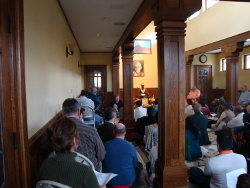
We are also indebted to everyone who contributed in any and all manner to this construction. There are too many names to mention. In the tradition of Bhagavan Ramana, we did not have to solicit donations for this project. Bhagavan has said, “Are we not children of Arunachala? Will he not take care of us? Do we have to beg?” No, we do not have to beg. We simply need to practice his simple and direct teachings to the best of our ability and leave it to him to take care of our needs, which he does. After completing 40 years in his Ashram, I can testify to the truth of this infallible divine promise.
I will be overjoyed if all of you use this new shrine as an anchor for your deepest spiritual yearnings and see it as a symbol of the true foundation or ground of your existence. I wish that you all come here frequently and infuse this hall and shrine with your deepest devotion, your deepest meditations and expressions of your love, peace and joy. Then we will all benefit and experience an ever-deepening presence of the Divine, both within and without. We will all do as Bhagavan Sri Ramana has taught us — and what Arunachala Bhakta Bhagawat wished — to live our lives absorbed forever in the Holy Hill of the Beacon Light, Arunachala-Ramana.

click to see a much larger image
62nd Aradhana of
Bhagavan Sri Ramana Maharshi
You, your family and friends are invited to join us in observing Sri Ramana Maharshi’s 62nd Mahanirvana Day
21 April 2012
Saturday, 11 a.m.
Arunachala Ashrama
86-06 Edgerton Boulevard
Jamaica, NY 11432-2937
ashrama at arunachala dot org
718.560.3196
On the Glory of the Siddhas
Chapter 18 of Sri Ramana Gita [1]
The following eight verses conclude the chapter.

20. This is the third appearance here on earth of the God (Kumara) who pierced of yore the Krauncha Hill. And now he has come to quell the darkness of mere logic by providing a living example of abidance in Brahman (pure being).

21. He is a poet of reknown in Tamiḷ, the language adored by Agastya and other sages. He beheld with his own inner light, the Eternal Light Supreme, unaided by a Guru.
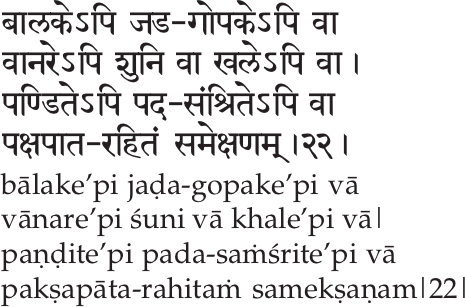
22. In a boy, a dull cowherd, a monkey or a dog, a knave, a scholar or a devotee, everywhere he beholds the same Being, and is without the least partiality.
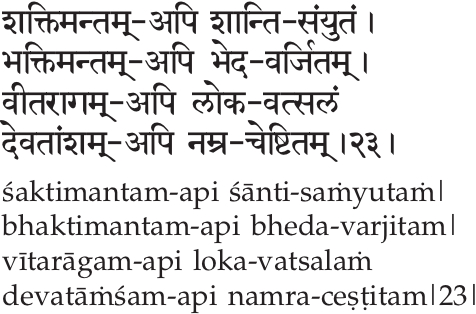
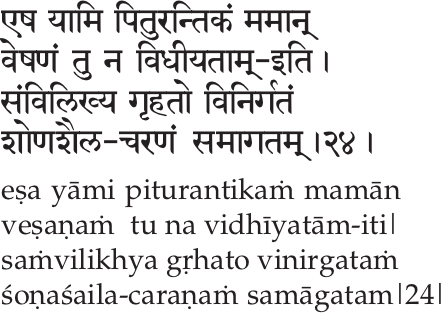
24. Writing down the message: “This goes to the presence of the Father. Let no search be made for me,” he left home and arrived at the foot of Arunachala.
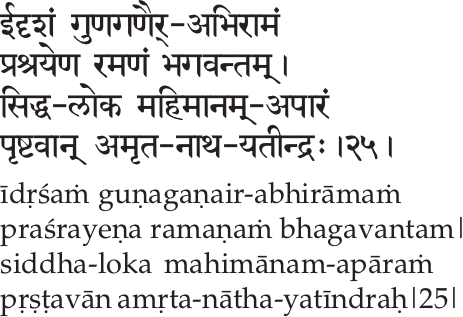
25. Of Bhagavan Ramana, thus happily endowed with a wealth of auspicious qualities, Amritanatha Yatindra humbly enquired concerning the boundless glory of the siddhas.
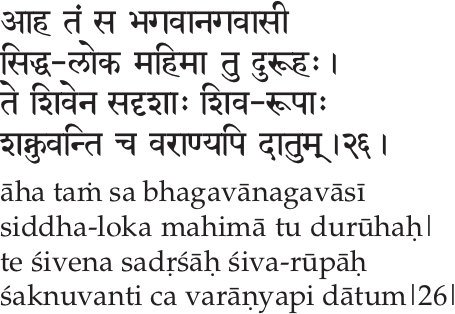
26. To him Sri Bhagavan, dweller on the holy hill,replied: “The glory of the siddhas is beyond imagination. They are equal to Shiva. Indeed, they are the very forms of Siva. They have the power to grant every prayer.”

Thus ends the eighteenth chapter entitled “On the Glory of the Siddhas”, in Sri Ramana Gita, the Science of Brahman and the Scripture of Yoga, composed by Bhagavan’s disciple, Vasiṣṭha Kavyakantha Ganapati Muni.
[1] at the time of this article, Sri Ramanasramam has three publications titled 'Sri Ramana Gita'.
Sri Ramana Gita – The Teachings of Bhagavan Sri Ramanana Maharshi




